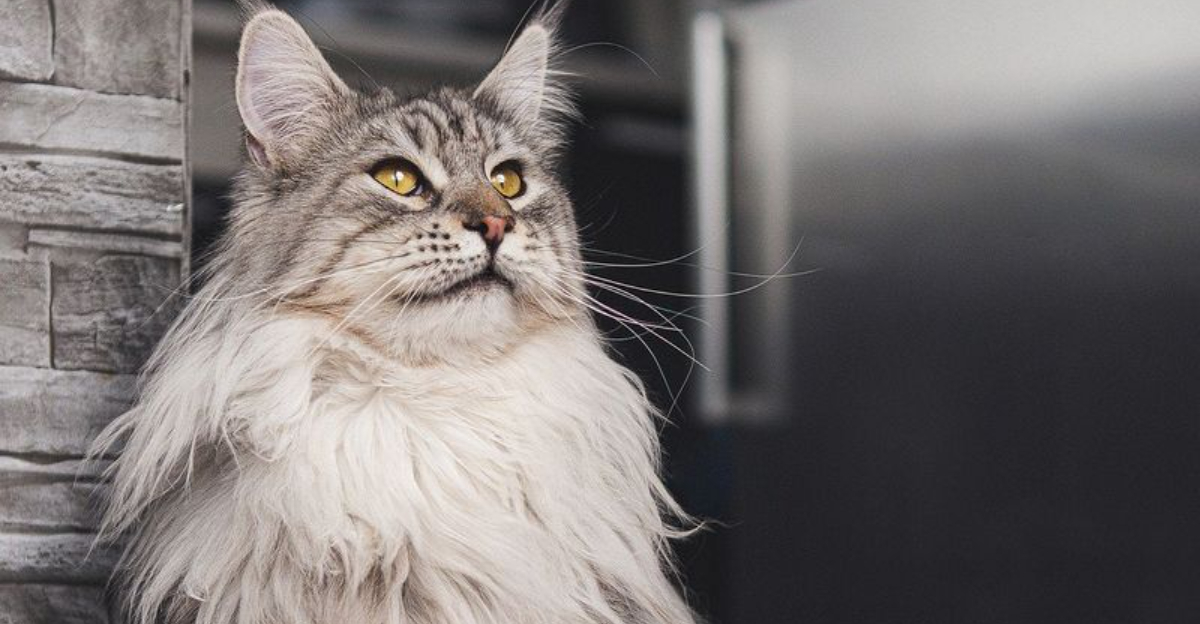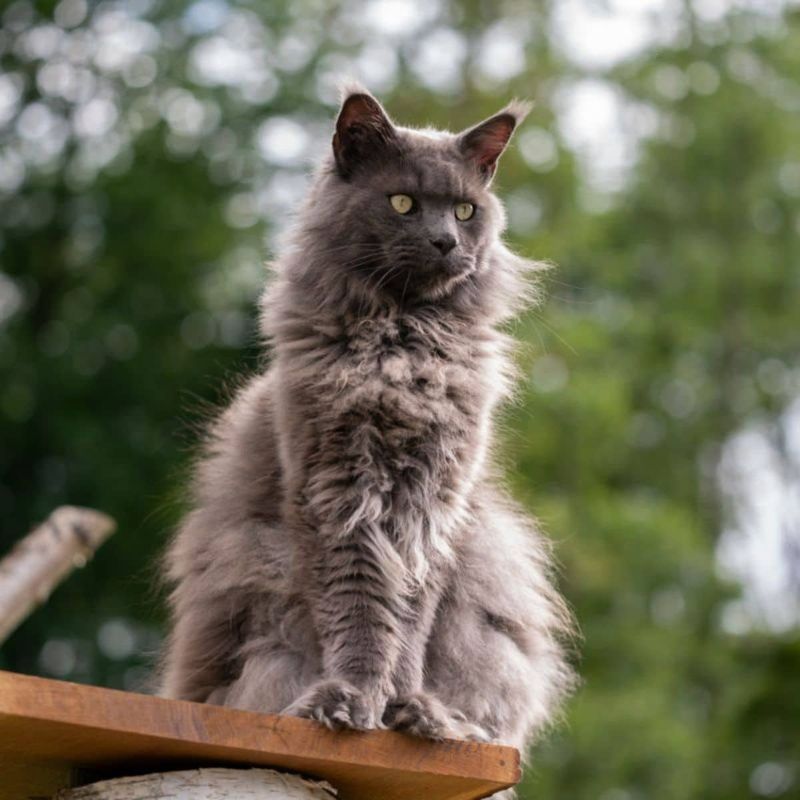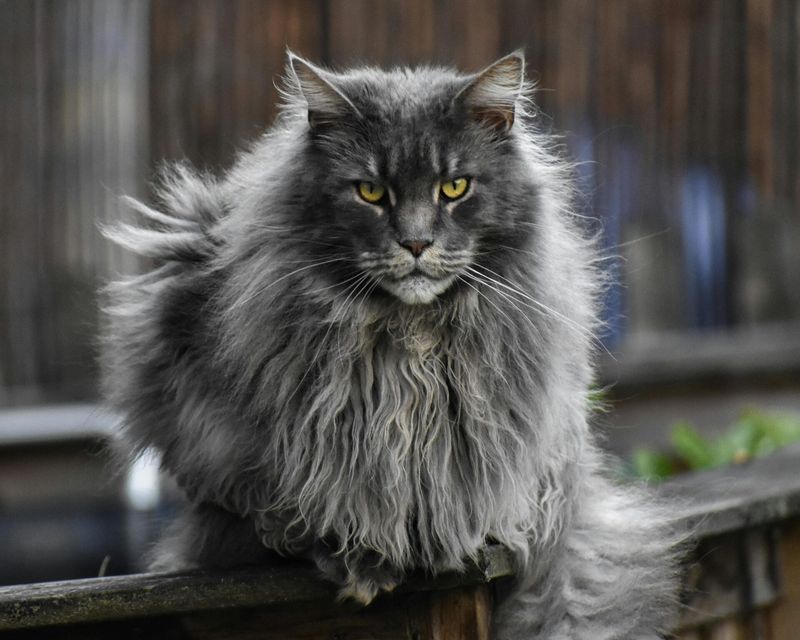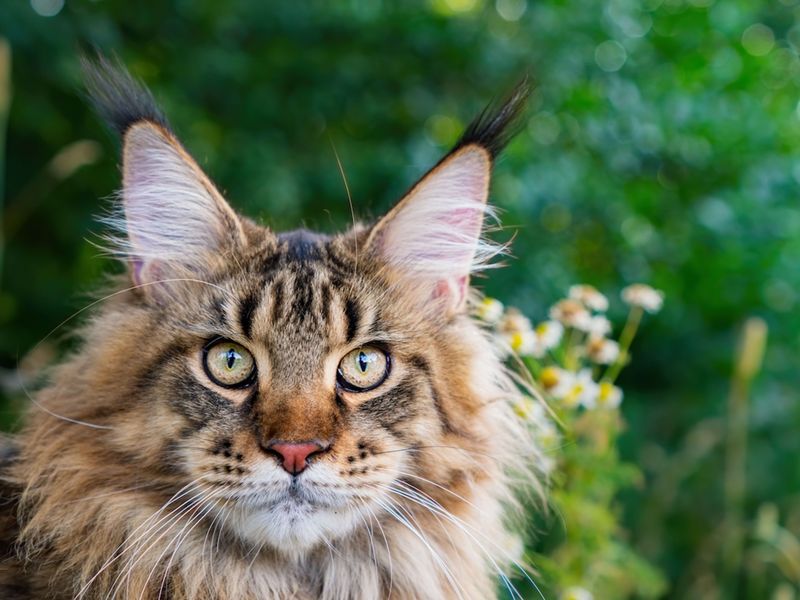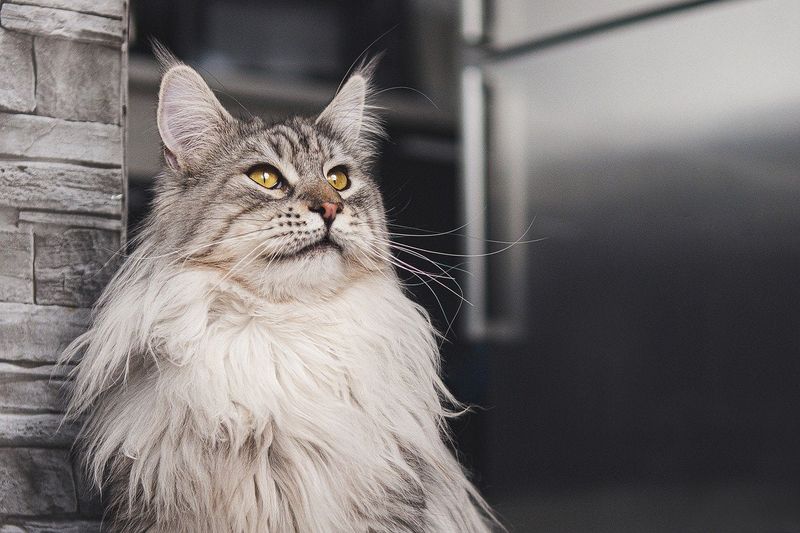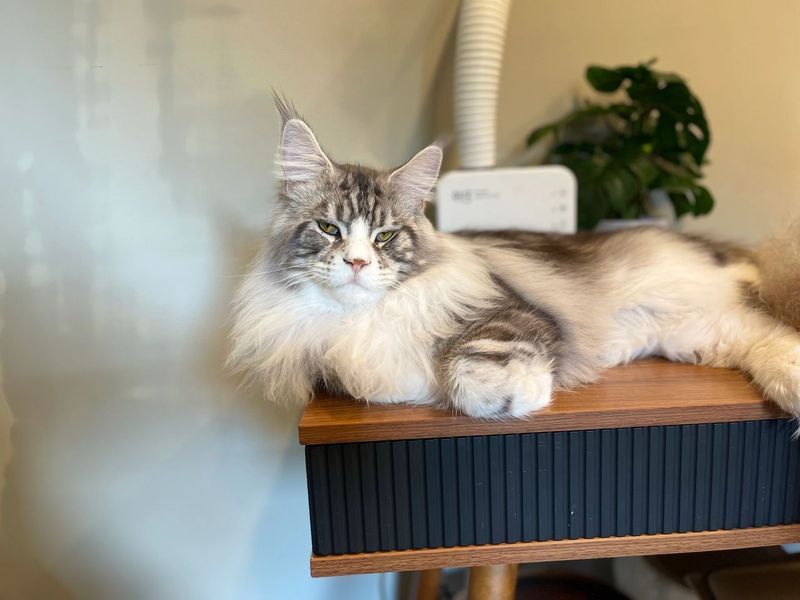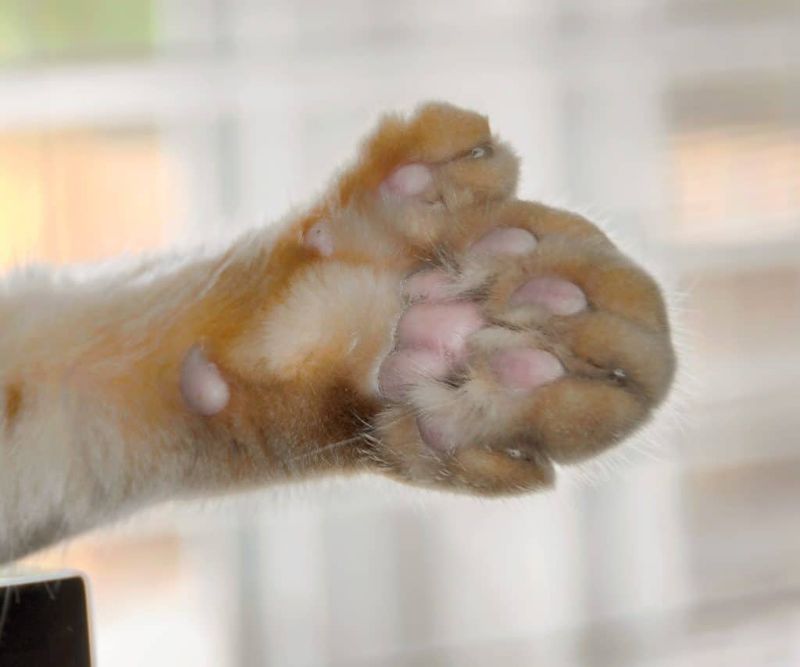📖 Table of Content:
- 1. They’re Part Raccoon
- 2. All Maine Coons Are Brown Tabbies
- 3. They’re Aggressive Due To Their Wild Ancestry
- 4. Maine Coons Need Outdoor Access To Be Happy
- 5. They’re Just Regular Cats With Long Hair
- 6. They Require Expensive, Specialized Care
- 7. All Maine Coons Have Polydactyl Paws
- 8. They’re Guaranteed To Be Massive
Maine Coons have earned a reputation as majestic, larger-than-life cats, but their mysterious nature has led to plenty of myths. While their fluffy coats and impressive size are awe-inspiring, many exaggerations about their origins and personalities have emerged over time. Sorting through the rumors and uncovering the truth behind these gentle giants can be a bit of a challenge.
These cats are often portrayed as wild, ferocious creatures, but in reality, their temperament is the complete opposite. Known for their friendly, social nature, Maine Coons are affectionate companions that enjoy human interaction. Despite their size, they’re often more like gentle giants than fierce predators.
The myths surrounding Maine Coons also include stories about their origins and special abilities, which can make them seem almost mystical. In reality, their history is rich and fascinating, but far from the wild tales some might believe. By examining these myths closely, it’s easy to see that Maine Coons are simply one of the most lovable and well-adjusted breeds.
1. They’re Part Raccoon
The bushy tails and tufted ears might make you wonder, but Maine Coons have absolutely zero raccoon DNA. This persistent myth probably started because of their name and wild appearance.
Biologically speaking, cats and raccoons can’t interbreed – they belong to completely different families! The real story? These cats developed their distinctive features to survive harsh New England winters.
Their raccoon-like tails actually serve as built-in blankets they can wrap around themselves when temperatures drop. The name likely comes from their ringed tails and the state where they became famous.
2. All Maine Coons Are Brown Tabbies
Brown tabby Maine Coons get all the magazine covers, but these cats actually come in a rainbow of colors and patterns! From solid white to jet black, silver to golden, and even smoke patterns – the variety is stunning.
Maine Coons sport over 75 different color combinations. They can have tortoiseshell, calico, or bi-color patterns too. Their eyes might be gold, green, copper, or even odd-colored (heterochromia).
Coat patterns don’t affect personality or health either. That gorgeous brown tabby look is just one fashion choice in their extensive wardrobe. Next time you meet a Maine Coon, don’t be surprised if it’s wearing something unexpected!
3. They’re Aggressive Due To Their Wild Ancestry
Despite their fierce appearance, Maine Coons are basically the teddy bears of the cat world. Their nickname “gentle giants” couldn’t be more accurate! These cats typically have sweet, friendly personalities that make them wonderful family pets.
The wild ancestry myth stems from their rugged looks and hunting prowess. Truth is, they’ve been domesticated companions for centuries. Maine Coons are known for their dog-like loyalty and tendency to follow their humans around.
Far from being aggressive, most Maine Coons are patient with children and other pets. Their vocal chirps and trills show their communication style is more conversation than confrontation. These cats prefer making friends to picking fights!
4. Maine Coons Need Outdoor Access To Be Happy
The myth that these forest-looking felines must roam outdoors is just plain wrong. Maine Coons adapt beautifully to indoor living when given enough enrichment and play opportunities.
Their hunting instincts can be satisfied with interactive toys, climbing trees, and puzzle feeders. Many Maine Coon owners create catios or use harnesses for supervised outdoor time, but these are extras, not necessities.
Indoor living actually protects Maine Coons from dangers like traffic, predators, and diseases. Their long, gorgeous coats stay cleaner and mat-free when not exposed to the elements. With proper stimulation indoors, these adaptable cats will thrive without ever setting paw in the wild.
5. They’re Just Regular Cats With Long Hair
Maine Coons aren’t simply fluffier versions of standard cats – they’re a distinct breed with unique characteristics! Their bodies are rectangular and muscular, built for harsh winters, with males weighing up to 18 pounds naturally.
Beyond size, they have distinctive facial features including high cheekbones, square muzzles, and lynx-like ear tufts. Their paws are massive with extra tufting between toes – nature’s snowshoes! Their water-resistant, uneven coat has three distinct layers.
Even their personalities set them apart. Maine Coons mature slowly, reaching full size around age four, and maintain kitten-like playfulness throughout life. Their distinctive chirping vocalizations differ from typical meows. These aren’t just big fluffy cats – they’re Maine Coons!
6. They Require Expensive, Specialized Care
The rumor mill suggests Maine Coons need fancy food, exotic grooming tools, and mansion-sized living spaces. Not true! Their care needs are surprisingly manageable for most pet owners.
Regular brushing sessions with a standard metal comb prevent matting in their long fur. No professional grooming required! Their robust health means fewer vet visits than many purebreds. They thrive on quality commercial cat food – no need for custom diets.
While they appreciate vertical space for climbing, Maine Coons don’t demand palatial homes. Many live happily in apartments with just a few strategic perches. These adaptable cats fit into various lifestyles and budgets without specialized equipment or extensive maintenance routines.
7. All Maine Coons Have Polydactyl Paws
The extra-toed Maine Coon makes for cute photos, but polydactylism isn’t a standard breed trait! While historically common in New England cats, today only a small percentage of Maine Coons have extra digits.
The misconception stems from shipping days when polydactyl cats were prized on boats for superior mousing abilities. Those sailors’ cats often interbred with local Maine cats, creating a temporary population boom of many-toed felines in the region.
Modern breed standards actually specify normal five-toed front paws and four-toed back paws. Polydactyl Maine Coons exist and are perfectly healthy, but they’re special exceptions rather than the rule. Those adorable mitten paws are a genetic variation, not a breed requirement.
8. They’re Guaranteed To Be Massive
Not every Maine Coon breaks size records! While they’re generally larger than average cats, there’s significant variation within the breed. Female Maine Coons typically weigh 8-12 pounds – similar to many non-Maine Coon cats.
Genetics, diet, and individual factors influence size more than breed alone. Many Maine Coons fall within the “large cat” category rather than the “giant” status their reputation suggests. Some may not reach their full potential size due to early neutering or nutritional factors.
The internet’s obsession with showcasing extraordinarily large specimens creates unrealistic expectations. A perfectly healthy, purebred Maine Coon might be just moderately sized. Their majestic appearance and rectangular body shape often make them appear larger than their actual weight!
